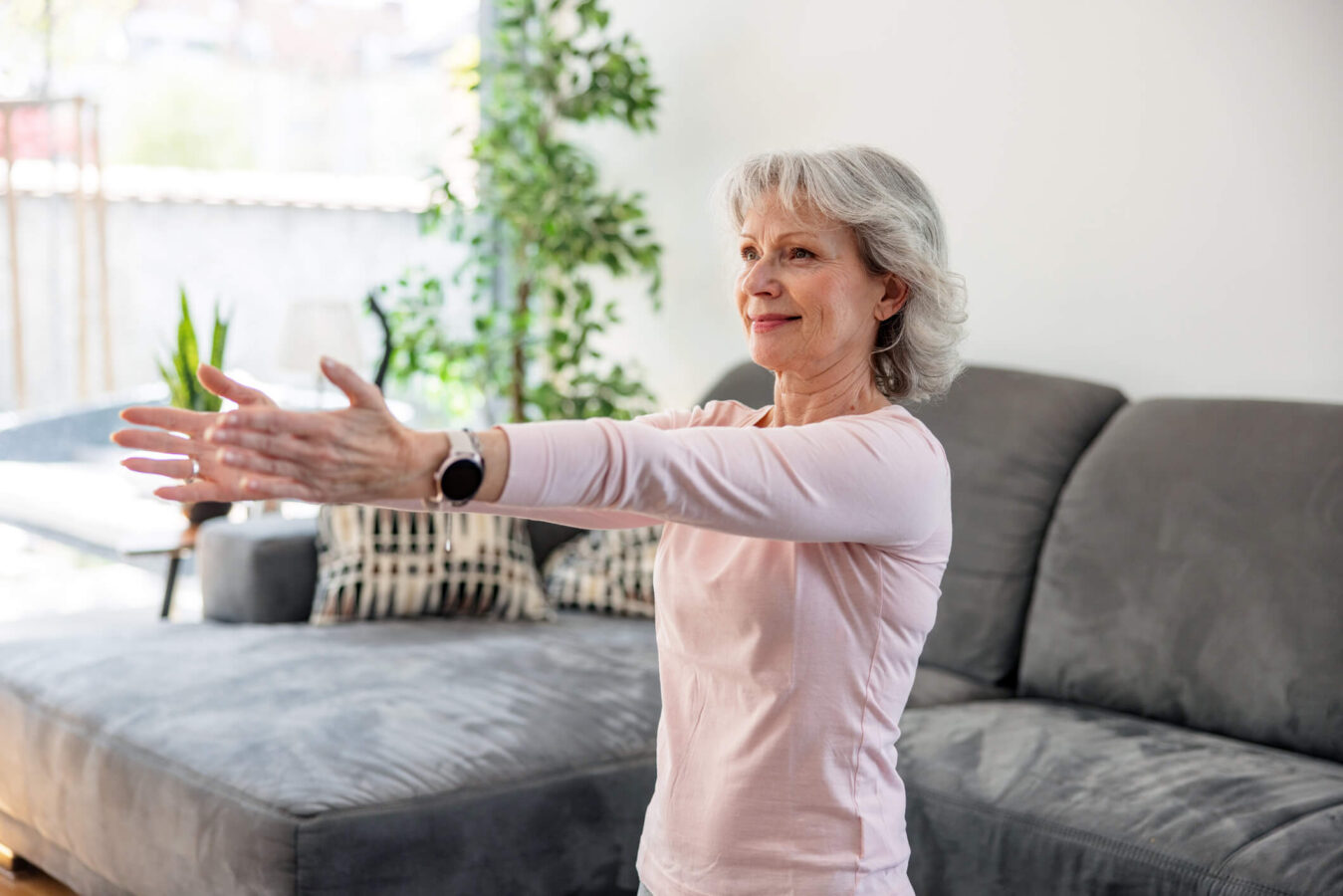
Medically reviewed by Misty Seidenburg
The older population in the U.S. has steadily increased over the past century, and that shift has become even more accelerated in recent years. In 2020, one in six people were age 65+, compared to one in 20 in the year 1920. As we consider the health and wellness needs of aging adults, it is clear that physical therapists play an important role in helping seniors remain active and independent for as long as possible. Balance and fall prevention are a few of the ways we combat the effects of aging in the clinic and at home. Read on for safe and effective balance exercises for seniors to improve stability and help prevent falls and injuries.
According to the National Council on Aging, falls are the leading cause of injuries among Americans ages 65 and up, with one in four adults falling each year. The risk of falls increases the older we get due to the many physiological changes that come with aging.
Hearing, vision, and reflexes are not as sharp as they once were. Age-related muscle loss can affect gait and stability. Some medications also cause dizziness and confusion that can make a person more unsteady on their feet.
It is essential to be proactive about improving balance and stability at any age, but especially as you enter the golden years. Fall injuries among the elderly can often be quite serious. Broken bones and head injuries are the most common and may require surgery, hospitalization, and extensive rehabilitation therapy.
Balance is the ability to maintain one’s center of gravity, or stand up or move without falling over. Our body’s visual, vestibular (inner ear), and proprioception (muscles and joints) systems work in concert to provide a sense of balance. Age-related deficiencies impact how these systems function. Exercise helps to combat these changes.
Exercise helps to improve balance and prevent falls by:
Exercise is just as important for mental and emotional wellness as it is for physical health. Seniors who are afraid of falling are less likely to venture out and be active, leading to depression and anxiety. But physical activity releases those feel-good endorphins that help to boost moods.
So what are you waiting for? Let’s get moving!
The National Institute on Aging (NIA) specifically recommends balance and strength training to help seniors build muscle and improve stability.
It’s important to note that some balance exercises can be challenging. Always check with your healthcare provider to ensure they are safe for you and you are cleared for activity.
Try these safe and simple moves to improve your balance, strength, and stamina right in the comfort of your own home. All you need is a chair, comfortable clothing, and sturdy athletic shoes. It’s best to perform these moves near a wall in case you need to steady .
As you progress, you can make balance exercises more challenging by closing your eyes, holding the position for longer or letting go of the chair or whatever you are using for support.
For best results, do these exercises three to five times per week. A note of caution: always check with your healthcare provider and physical therapist before starting any exercise program. It’s important to assess your fall risk and make sure these movements are safe for you. Modifications may be recommended.
If you have noticed you’re a bit more unsteady on your feet than you used to be, there are steps you can take to prevent falls. Studies show that exercise makes a difference. Seniors who regularly performed balance, functional, and resistance exercises saw their fall risk drop by 28%.
Are you interested in learning more about balance and fall prevention and the many other benefits of geriatric physical therapy? Find a clinic near you.

